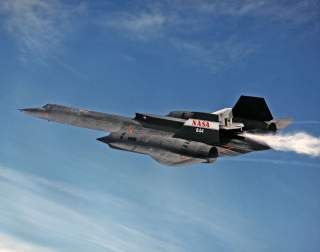The Story of How America's Mach 3 SR-71 Spy Plane Out Ran Missiles
Amazing.
There seems to be a confirmed trust now, between me and the jet; she will not hesitate to deliver whatever speed we need, and I can count on no problems with the inlets. Walt and I are ultimately depending on the jet now – more so than normal – and she seems to know it. The cooler outside temperatures have awakened the spirit born into her years ago, when men dedicated to excellence took the time and care to build her well. With spikes and doors as tight as they can get, we are racing against the time it could take a missile to reach our altitude.
It is a race this jet will not let us lose. The Mach eases to 3.5 as we crest 80,000 feet. We are a bullet now – except faster. We hit the turn, and I feel some relief as our nose swings away from a country we have seen quite enough of. Screaming past Tripoli, our phenomenal speed continues to rise, and the screaming Sled pummels the enemy one more time, laying down a parting sonic boom. In seconds, we can see nothing but the expansive blue of the Mediterranean. I realize that I still have my left hand full-forward and we’re continuing to rocket along in maximum afterburner.
The TDI now shows us Mach numbers, not only new to our experience but flat out scary. Walt says the DEF panel is now quiet, and I know it is time to reduce our incredible speed. I pull the throttles to the min ‘burner range and the jet still doesn’t want to slow down. Normally the Mach would be affected immediately, when making such a large throttle movement. But for just a few moments old 960 just sat out there at the high Mach, she seemed to love and like the proud Sled she was, only began to slow when we were well out of danger.
I loved that jet.”
This article by Dario Leone originally appeared on The Aviation Geek Club in 2018.
Image: Wikimedia.

